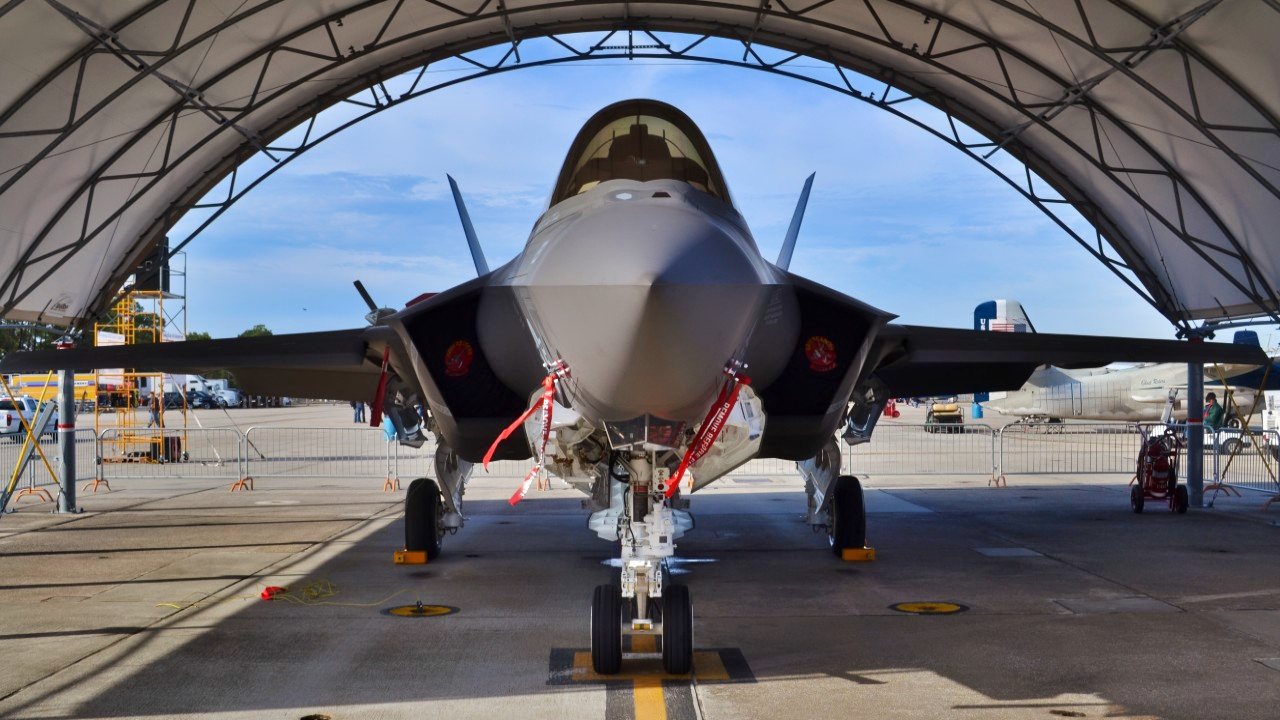Stealth Flex: U.S. Air Force Launched 52 F-35 Fighters in 'Elephant Walk'
The U.S. Air Force's "elephant walks," where aircraft taxi in close formation before takeoff, have become symbolic demonstrations of military readiness. A notable example occurred in January 2020 at Hill Air Force Base with 52 F-35 Lightning II fighters. This exercise showcased the unit's combat readiness, with each F-35 costing $44,000 per flight hour.
Summary and Key Points: The U.S. Air Force's "elephant walks," where aircraft taxi in close formation before takeoff, have become symbolic demonstrations of military readiness.

-A notable example occurred in January 2020 at Hill Air Force Base with 52 F-35 Lightning II fighters. This exercise showcased the unit's combat readiness, with each F-35 costing $44,000 per flight hour.
-The exercise not only tested operational capabilities but also sent a powerful message about the U.S. military's air power to adversaries like China and Russia.
F-35 Stealth Fighter Flex: The Elephant Walk of Elephant Walks
In recent years, the United States Air Force has conducted a number of very high-profile "elephant walks," the term for taxiing a number of aircraft before takeoff. In addition to the close formation on the ground, it can involve a minimum interval takeoff.
The first elephant walks occurred during the Second World War when large fleets of allied bombers massed for attacks – and observers on the ground noted that as the aircraft lined up, it resembled the nose-to-tail formations of elephants walking to a watering hole. Today, the U.S. Air Force employs elephant walks to show the capability of a unit as well as the teamwork that is required to conduct such an operation.
It also can help pilots prepare for the launching of fully armed aircraft in a mass event if needed.
The Walk of the F-35 Lightning IIs
While during World War II, dozens and even hundreds of bombers could be lined up, recent elephant walks are far smaller but no less impressive, especially considering the capabilities of modern aircraft.

Such was the case in January 2020, when the United States Air Force's Active Duty 388th and Reserve 419th Fighter Wings conducted the Combat Power Exercise at Hill Air Force Base (AFB), Utah with 52 Lockheed Martin F-35 Lightning II 35As – the conventional takeoff and landing variant of the U.S. military's Joint Strike Fighter.
The elephant walk of the F-35 Lightning IIs was employed to demonstrate the "ability to employ a large force of F-35As" as well as to test the air wing's readiness for personnel accountability, aircraft generation, ground operations, flight operations, and combat capability, according to a Hill statement from the time.
Elephant Walk Photo Worth a Few Million Dollars
Though the U.S. Air Force's press photos may have looked to many like little more than a number of aircraft lined up, the exercise had actually been planned for months. As TheDrive.com reported, "The amount of hardware on the runway in terms of billions of dollars is staggering."
As previously reported, the elephant walk was quite costly to pull off, as the F-35 Lightning II costs $44,000 per hour to fly.
If each of the 52 F-35 fighters in the elephant walk flew for just a single hour, it was still a $2 million-plus exercise. If the jets flew for two hours, the cost likely exceeded about $4 million.
Yet, it could be described as priceless.
The ability to launch 52 of the fifth-generation F-35 stealth fighters was as much to send a message to detractors of the program within the United States as it was to reaffirm the capabilities of the U.S. Air Force to near-peer adversaries such as China and Russia.
It highlighted the improved readiness rate of the F-35 fleet at the time, which had been lagging for years when the elephant walk was conducted in 2020.
The service had only just reached a mission-capable rate of 75 percent the prior October, up from just 66 percent a year earlier.
No doubt an adversary would have loved to have the chance to take out the Lightning IIs on the ground – which is about the time that the aircraft can be described as truly vulnerable.
Author Experience and Expertise: Peter Suciu
Peter Suciu is a Michigan-based writer. He has contributed to more than four dozen magazines, newspapers, and websites with over 3,200 published pieces over a twenty-year career in journalism. He regularly writes about military hardware, firearms history, cybersecurity, politics, and international affairs. Peter is also a Contributing Writer for Forbes and Clearance Jobs. You can follow him on Twitter: @PeterSuciu. Email the Author: [email protected].
Image Credit: Creative Commons.


